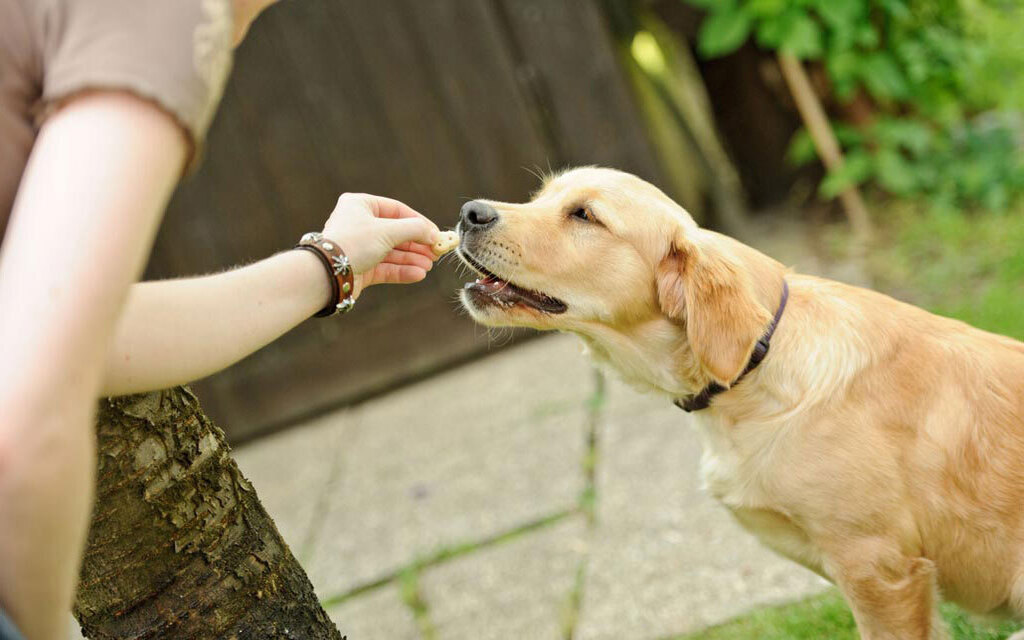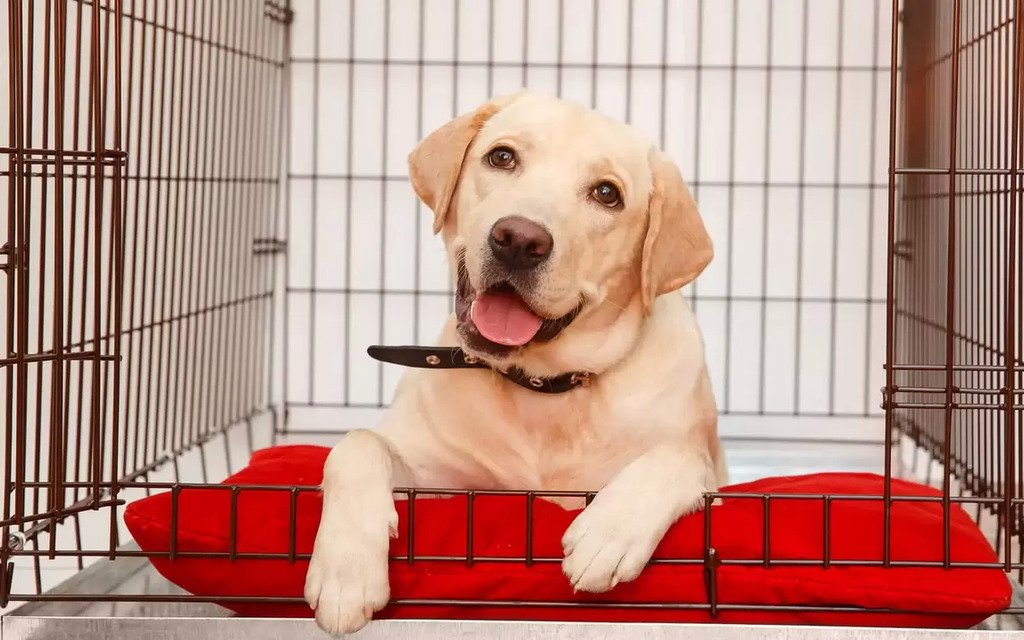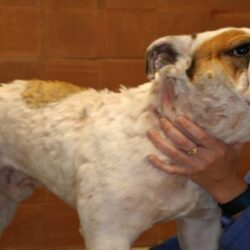For new dog owners, teaching their dogs to relieve themselves outside can be a difficult task. It takes a lot of good reinforcement, patience, and understanding to teach dogs to go outside. Your dog or puppy needs to be trained to go outside on a regular basis. Accidents happen during the process, but if you follow these fundamental training rules of how do you train a dog to poop outside, you can easily achieve your goal.
Any age dog can be easily house-trained; all it needs is time, consistency, and understanding. Take your dog outside right away if it starts to poop indoors. Your dog will eventually learn to be patient. It could be beneficial to let your dog spend as much time outside as you can and to keep an enzymatic cleanser on hand in case of any accidents. For more advice on cleaning up messes in your house, follow these fundamental training rules of how do you train a dog to poop outside:
Table of Contents
1. Creating a Schedule for Your Dog

How Do I Potty Train My Puppy to Go Outside
Follow this fundamental training rule of how do you train a dog to poop outside, to easily achieve your goal. Keep your dog’s restroom schedule consistent. For dogs of any age, having a daily schedule is essential, but young puppies require it most. Young puppies could require a bathroom break once per hour. To make sure your dog is trouble-free, it is ideal to create a schedule as soon as you can.
Additionally, it’s crucial to allow your dog out right away in the morning, during or right after playtime, and after he’s consumed a substantial amount of food or drink. For training purposes, it’s crucial to give him a bathroom break every 20 to 30 minutes.
Give your dog a place to relieve himself. It’s crucial for your dog to have a regular site where he does this, whether you take him for walks or let him outside in a fenced-in area. This could be a tree you pass by close to your house or a specific area in the yard.
2. Rewarding the Positive Conduct of Your Dog

How to Train an Older Dog to Poop Outside
Follow this fundamental training rule of how do you train a dog to poop outside, to easily achieve your goal. On walks, provide a verbal order. Try linking a vocal command to the location where your dog prefers to relieve himself. You can instruct him to “Go potty” or “Go pee” each time he uses that particular bathroom.
Reward your dog. When you let your dog out into the yard and he obeys your command to “go potty,” immediately give him praise and a treat for the accomplishment.
Reduce food snacks gradually. As your dog continues to train, you might want to gradually decrease the frequency of food rewards after he discharges himself before eliminating them entirely. Early on in training, treats are a crucial and useful component, but rewarding your dog with food every time he goes potty shouldn’t become a lifetime habit.
3. Dealing with Accidents

How to Teach Your Dog to Ask to Go Outside
Don’t scold your dog for mishaps. Even after being effectively house-trained, your dog may inevitably have a few accidents. Accidents could occur regularly when you’re training. It’s critical to keep in mind that your dog did not intend to accidentally do harm and that he will eventually learn not to repeat the behavior.
When your dog has an accident, do not yell at him or rub the mess in his face. This prevents your dog from learning from his mistakes and could make him fear you. Be patient with your pet and accept mishaps.
When you see an indoor accident happening, stop it. Make a startling noise, such as clapping your hands or yelling, “Go outside,” if you see your dog urinating within the home. Take your dog outside when he has finished going outside, and give him praise.
Clear up mishaps completely. Since dogs have an acute sense of smell, if the odor is not completely removed, they may start to use the accident site as their preferred bathroom. The younger the puppy, the more challenging this can be. After mishaps inside, use an enzymatic cleanser to completely eliminate odors.
You can use indoor mishaps as a training technique if you have a yard. Take the paper towels that were used to wipe up an indoor accident outside to the dog’s regular toilet place. Leave the paper towels outside on the ground, and secure them with a rock or stick. Your dog will get convinced that going to the bathroom outside requires leaving the house after he smells his urine on the paper towels. You can take away the used paper towels as soon as your dog understands the lesson and starts going to the bathroom outside once more.
4. Implementing Crate Training

How to Teach Puppy to Poop in One Place
Follow this fundamental training rule of how do you train a dog to poop outside, to easily achieve your goal. Pick the appropriate crate. When trying to housebreak your dog, crate training is an excellent technique to adopt. Dogs start to think of their crates as a kind of den inside your house, and no dog wants to purposefully pollute their den. Crates, however, are not an easy solution. Make sure your dog is at ease in his crate because crate training requires time and care.
An adult dog should be able to stand up, turn around, and lie down in a crate that is just big enough for him to do that.
Slowly introduce your dog to his crate. Your dog could experience trauma if you force him into a box without giving him any time to get used to it. It’s best to gradually introduce a new crate by letting your dog investigate it and using soothing, encouraging tones whenever he approaches it.
Try leaving the crate’s door ajar and placing snacks inside from time to time. Treats should be dropped inside the crate gradually, starting near the door and working your way farther inside.
Anytime he wants, let your dog explore the crate. Keep the door open so that he gets the impression that he can enter at his convenience.
Start feeding your dog meals inside the crate. Feeding your dog inside the crate should start as soon as he feels secure and accustomed to exploring the space. This will assist in assisting him in becoming accustomed to entering the crate on a regular basis.
While your dog is eating, shut the crate door. To prevent your dog from being scared when you first start doing this, you should open the cage as soon as he finishes his meal. The length of time you leave the door closed can be gradually increased.
Do not immediately let your dog outside if he starts to weep, whine, or bark. Open the crate only when he stops misbehaving. If you always let him out when he barks, he’ll start to believe that he can leave whenever he wants.
It is fine to start putting your dog in the crate while you leave the house for quick errands, and you might want to think about leaving him in the crate overnight once he feels secure doing so for close to a half hour without issue. Up to a few weeks may pass during this process before your dog feels secure enough to be left alone in the crate.
Start consistently crate training your dog. You can start putting your dog in the crate when you leave the house if he has shown that he can handle being left alone for limited periods of time. In order to prevent your dog from becoming anxious and not understanding why he is kept inside the crate while you are still home, wait until you are almost ready to go before locking him inside.
Just before putting your dog in the crate, make sure to take him outdoors so he may relieve himself. If your dog doesn’t get enough outdoor time before being crated, he may be more likely to have accidents when you’re not home.
Never punish someone with the container. Your dog shouldn’t associate the crate with yelling or being punished, so avoid doing this. He should only associate the crate with good things as long as you continue to feed him there and only use it for training purposes (like keeping him from wrecking the house when you’re not home).
Frequently Asked Questions
1. How do you tell if a dog needs to go potty?
Look out for indications that your dog needs to go outside. There are certain indicators, such as circling or sniffing around, squatting, restlessness, barking, or clawing at the entrance. As soon as you see these indicators, grab the leash and lead your dog outside to its designated potty location.
2. Which dog is the easiest to potty train?
One of the most intelligent dog breeds, Border Collies are also among the simplest to housebreak. They don’t require much instruction to begin herding sheep because they naturally possess herding instincts. You can quickly teach kids fundamental ideas by showing them lots of kindness and praise.
3. How much time does it take a dog to learn to use the bathroom outside?
Puppy house training normally takes 4-6 months, but it can take some dogs up to a year.
4. Do dogs inevitably learn to pee outside?
Puppies should start going outside frequently at around 6 weeks old so they can become acclimated to going potty on grass. Even at the age of 8 weeks, by the time you take your new puppy home from the breeder, he should choose to go potty outside rather than in his bed.
5. How train a dog to pee outside?
Teach them what to do rather than what not to do. When they approach the door to let you know they need to go outdoors, give them a sweet treat and compliment them. Give them lots of positive feedback each time they use their potty pad, and reward them with their favorite treat whenever they successfully relieve themselves outside.
6. How do you prevent a dog from peeing inside the house?
When the dog starts to poop or pee inside, stop him right away by clapping and yelling, “Ah ah!” The moment you can, take the dog outside. Take the dog immediately to the outside location you want him to go once.
7. When is it too late to learn a dog where to poop?
Although training an older dog can be more challenging than training a young puppy, it’s never too late to teach a dog. You just need to be prepared to devote the time, patience, and persistence needed to establish boundaries, form new habits and curb destructive behavior.
8. How do dogs signal when they need to pee?
There are several of these, such as sniffing, fidgeting, and starting to circle before squatting. The need to relieve itself may also be indicated by a dog whining or pacing.
9. Why does my dog keep going outside but still poop inside the house?
Your dog may be eliminating indoors because something outside is frightening or worrying them. Some dogs are naturally tenser, and loud noises like thunder, people shouting, passing cars, barking dogs, or other loud noises might make them feel scared and uneasy.
10. How long do dogs poop after eating?
The majority of dogs will poop shortly after eating or right away after waking up. Both of these are excellent times to schedule walks or other dog exercises.
11. Is it challenging to potty train dogs?
Although it is straightforward, housetraining is not always simple. A puppy’s house training can be challenging at first, but the more persistent you are, the quicker your puppy will pick it up.
12. Can a dog hold poop for a while?
Young dogs have the capacity to hold their poop for up to 10–12 hours, but this does not imply that they should. The typical adult dog has to be given at least 3-5 chances each day to go potty. At least once every eight hours, then.
13. How long do dogs pee after drinking water?
Your dog will start to feel the pee two hours after eating or drinking.
Image credit: Yandex.com
Also Read: Best Hunting Dogs















